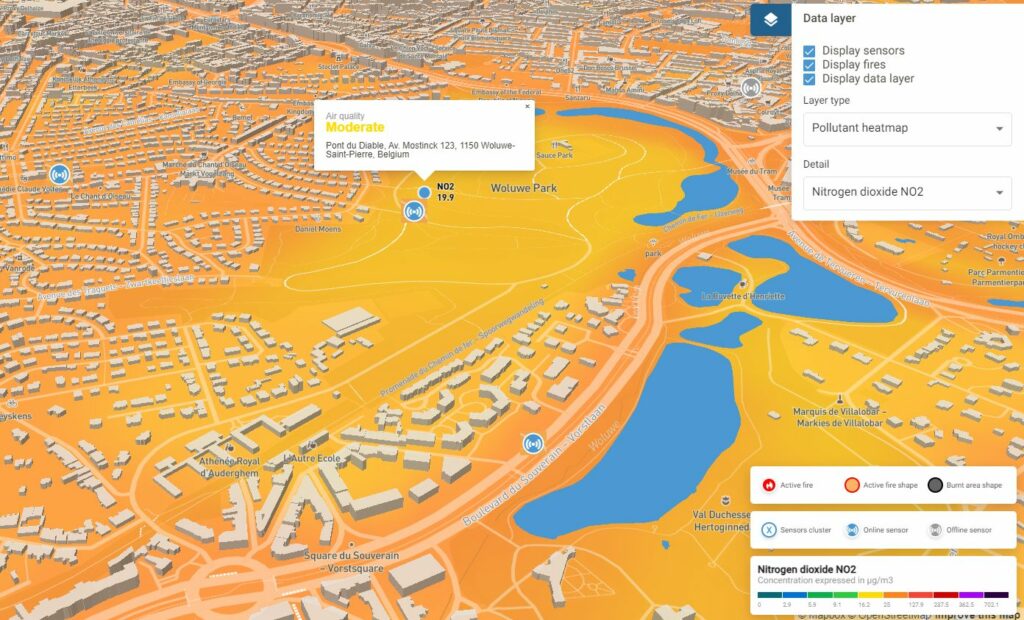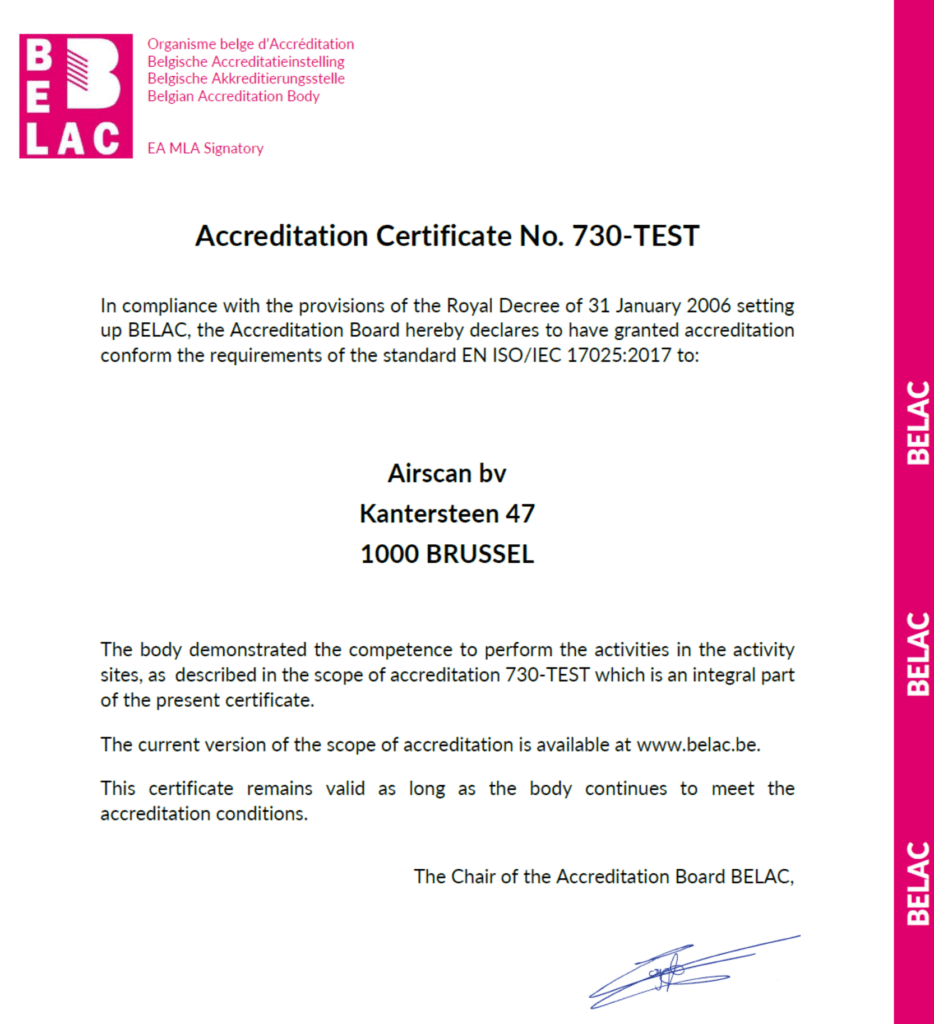Heat waves and ozone concentration
04/08/2020 The National Observatory in Uccle, Brussels detected a new historical heat record when the temperature reached 36.5°C on 31st of July 2020. This historical heat record is not only a reason to seek refreshment at our Belgian coast but also a perfect moment to think about air quality and climate change. Intensive sun activity can cause an enormous generation of ozone gas at the lowest layer of the atmosphere. This is the result of reactions between sunlight and pollutants (Volatile Organic Compounds, Nitrogen Dioxide, Carbon Monoxide, Methane) present in the lowest layer of the atmosphere.

For instance, ozone concentration exceeded the European Union limit of 180 µg/m3 in 2 regions of Belgium (Flanders and Limburg) on the 31st of July. The gas concentration profile is shown in the Figure below.

source: Vlaamse Milieumaatschappij (Irceline.be)
The Royal Meteorological Institute (RMI) has issued a forecast of another heatwave starting from Wednesday this week (05/08/2020) that can lead to elevated concentrations of Ozone.
Potential risks associated with exposure to high Ozone concentrations include:
- Make it more difficult to breathe deeply and vigorously.
- Cause shortness of breath and pain when taking a deep breath.
- Cause coughing and sore or scratchy throat.
- Aggravate lung diseases, such as asthma, emphysema, and chronic bronchitis.
- Make the lungs more susceptible to infection (COVID – 19).
- Continue to damage the lungs even when the symptoms have disappeared.
- Cause chronic obstructive pulmonary disease (COPD).
Here are a few tips and recommendations to minimise risks of health problems caused by high temperatures and Ozone concentration:
- Stay hydrated, drink more water than usual.
- Avoid alcoholic, caffeinated, and sugared drinks.
- Limit physical activities outdoors during the maximum solar activity period.
- Do not open windows during the day, ventilate premises after 21:00.
- Minimise usage of private transportation. Emissions from cars can increase Ozone generation volumes
Airscan helps public and private organisations to monitor and control both indoors and outdoors ozone levels to ensure the best living and working environments!
Learned something? Feel free to share.

Air Quality Across Different Brussels Metro Stations
With its intricate network of metro stations, Brussels serves as a crucial artery for daily commuters and tourists alike.
The quality of air within these subterranean hubs remains a pressing concern. In this blog post, we dive deeper into the air quality across various metro stations in Brussels, focusing on the concentrations of PM2.5 and PM10—two of the most harmful pollutants to human health…

Airscan Launches Air Quality Campaign in Brussels
From the 1st to the 14th of February, Airscan launched an air quality campaign in Brussels. For two weeks, air quality was measured at 8 different locations in the same number of municipalities of the capital. With this campaign, Airscan wants to shed light on the importance of clean air, especially in a busy city such as Brussels.

Airscan obtient l’accréditation ISO 17025
Airscan célèbre une année 2023 couronnée de succès avec une expansion internationale et l’obtention de l’accréditation BELAC pour ISO/IEC 17025:2017, reconnaissant leur engagement à fournir des services de haute qualité. L’accréditation renforce la crédibilité et positionne Airscan comme un partenaire de confiance pour les clients de l’immobilier qui poursuivent des certifications de bâtiments écologiques.




